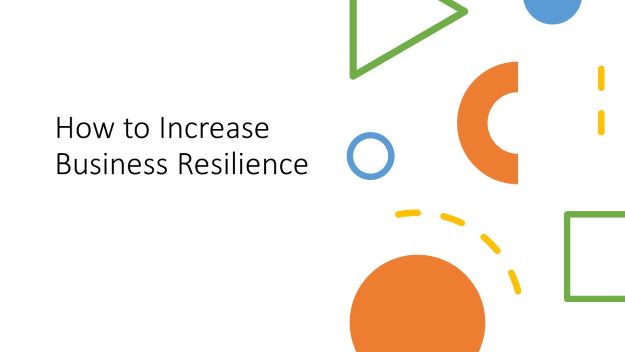Planning for a pandemic
Understanding pandemics and their effects is critical to business resilience. Using a pandemic impact analysis template, business leaders can identify the most critical roles, processes, and assets. Developing a pandemic recovery plan requires patience and understanding of the situation. Once the plan has been implemented, businesses can return to normal operations.
In the wake of the COVID-19 pandemic backdrop, companies have begun to take a more holistic approach to risk management. Eight in 10 businesses indicated that they needed to adopt an enterprise-wide approach to risk management in order to tackle complex issues and maintain operational resiliency. This has led many companies to broaden their risk perspective and create pandemic-response plans.
Organizational resilience enables organizations to meet short-term and long-term financial goals, maintain operational capacities, and cope with fluctuating demand. Organizational resilience fosters a healthy culture within the workforce and maximizes retention. It also enforces higher standards of performance. A culture of resilience teaches staff to align their values with their actions and responds to criticism with meaningful change.
Planning for a pandemic can help businesses and organizations deal with the financial consequences of a pandemic. Governments can help businesses and organizations adapt by deferring tax payments or providing incentives for digital investments. In addition, business systems and strategies need to be designed to be resilient and offer sustainable products.
Managing for resilience
Business resilience is the ability to take a blow and bounce back. It embodies the principles of business continuity but goes beyond these to strengthen an organization's immune system. It entails managing for change and takes into account the relationship between all relevant forces and their potential impacts. In addition, it requires contributions from different management disciplines.
Resilience is the ability of a business to withstand a range of threats, including disruptions to ICT (information and communication technologies) systems, cyber attacks, consumer demands, and market changes. It is essential to the continued operation of a business, and this requires a long-term mindset. Businesses must consider the risks associated with these risks and build contingency plans to address them.
While business resilience varies greatly from company to company, many leading companies are attempting to create a more resilient culture. For example, go for local solutions, servant leadership, multi-stakeholder engagement, and long-term goals to build resilience.
How to succeed in building business resilience?
Business resilience requires a commitment from senior management and is distinct from business continuity. It requires employees to think on their feet and leaders to anticipate and respond to challenges. As a result, business leaders must be clear in communicating their resilience approach and making sure that people are aware of it.
Managing for growth
Managing for growth can increase your business resilience, which is the ability to withstand unexpected change. In today's world, technology is evolving at an exponential rate, and many organizations are struggling to keep up. This can have serious consequences for your business if it goes unaddressed.
The most resilient companies are those that can take advantage of unexpected opportunities and minimize damage from new threats. This requires a flexible organizational structure, modern processes, and effective communications. In addition, business leaders should avoid micromanagement and focus on the development of an inclusive culture. They should eliminate silos in the organization and integrate their IT and business functions. Developing a culture of business resilience requires strategic planning to ensure the long-term health of the company.
As part of building business resilience, a company's management team should understand the business's KPIs and share a common understanding of its resilience track record. They should also agree on how much risk they will tolerate in the future. It is important not to use generic risk assessments but insist on specific goals based on hard questions. The process of determining these goals will be a back-and-forth process, and they are most likely to fall in a gray area of marginal risks.
Embed ‘Continuous Improvement’ in your organization’s DNA-
Resilience is essential for business survival, but many companies are not building enough of it. In today's turbulent world, more companies are becoming vulnerable to crises. However, by investing in resilience, companies have the potential to increase their profitability. However, they must be aware of the trade-offs that come with resilience. For example, investing in infrastructure may lead to increased costs, while reducing revenue.
High-budget investment plans to build business resilience may not work for all companies, especially the small setups and startups. A more doable approach is to install Lean, Kaizen in your company’s DNA. Kaizen-ing by default minimizes risks, reduces operational costs, improves product quality and catapult’s customer satisfaction.
Kaizen-ing hence brings dual benefit- It increases both topline and bottom line of a business, regardless of its size or industry sector. Contact us to know more about How Lean, Kaizen can help your business?
An important to note is- While taking steps to build business resilience, it is also necessary to measure success. A Bain Resilience Index measures the resilience of individual companies. I’ve a separate post on this, check it out here.
Related Reading:
- Up to speed with workflow- How to choose business process improvement methodology for your organization and measure the positive change.
- Kaizen for pharmaceutical, medical device and biotech industries
- How to cut costs strategically using Kaizen
- Streamline processes and workflows with Gemba Walk.
- Top Ten Strategic Decision-Making Tools for Operational Excellence
Follow Shruti on Twitter, Facebook, YouTube, LinkedIn
Categories: Strategy | Operations | Leadership
Keywords and Tags:
#operationalexcellence #strategicdecisionmaking #strategy #strategymanagement #businessresilience #continuousimprovement #managingforchange #managingforgrowth





















